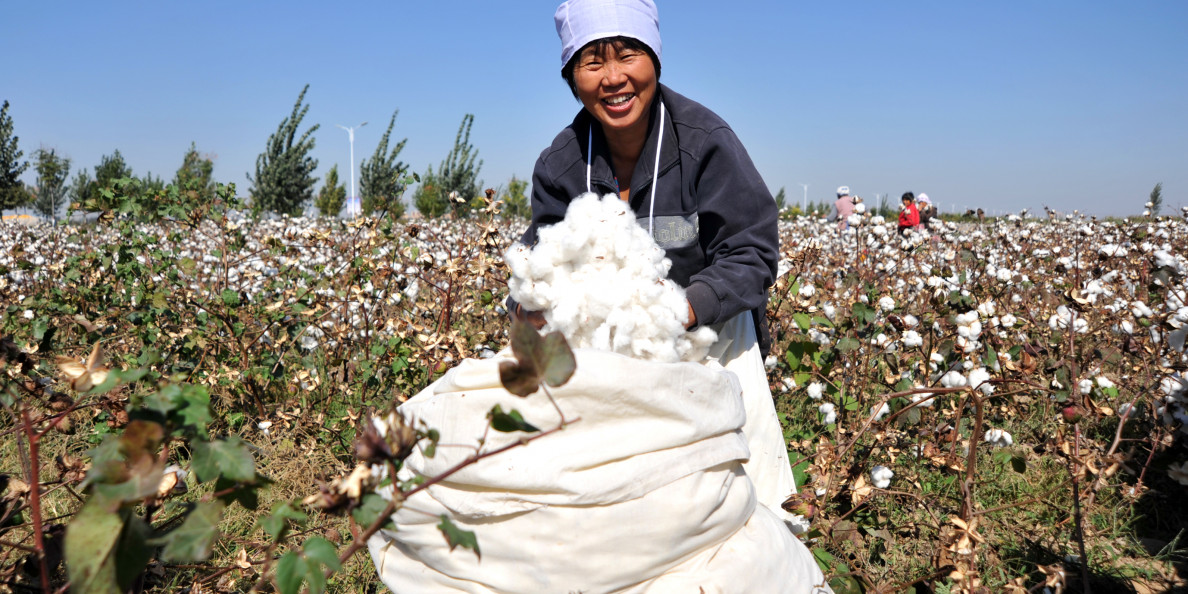BEIJING (Reuters) - China is set to boost its imports of cotton by issuing additional import quotas to mills, said the China Cotton Association on Monday, a move seen by the market as another step toward meeting the demands of top exporter the United States.
The association, which lobbies the government on behalf of cotton farmers and processors, said the soon-to-be-released additional quotas were one of the measures the government was taking to help to ease recent market volatility.
China, once the world’s top cotton importer, has seen its imports shrink from more than 5 million tonnes in 2011/12 to around 1 million tonnes last year, due to its efforts to reduce state stockpiles of the fiber. Now, after several years of auctions to lower state stocks and with demand recovering, the market has become concerned about supplies.
China’s domestic cotton futures have rallied nearly 18 percent since early April, fueled in part by worries over crop damage from heavy rains, as well as by heavy speculation.
Traders said China’s move, however, was more likely related to pressure from the United States for higher imports of American farm goods.
“It’s definitely related to trade talks,” said a China-based trader with an international firm.
The United States and China have threatened tit-for-tat tariffs on goods worth up to $150 billion each, as U.S. President Donald Trump has pushed Beijing to open its economy further and address America’s large trade deficit with China.
China has agreed to significantly increase its purchases of U.S. goods and services, although talks over the weekend yielded no public statement on new agreements.
The United States is the world’s top cotton exporter and China’s top overseas supplier. It shipped around 500,000 tonnes to China in 2017, making cotton the third most valuable U.S. farm export, behind soybeans and hides and skins.
But China has restricted its imports since 2014, offering only the 894,000 tonnes in tariff-rate quotas it must allocate as part of its commitments to the World Trade Organization.
Additional quotas with sliding tariff rates that were issued prior to 2014 were halted in order to get rid of the huge state stocks. Total imports in 2017 were 1.16 million tonnes.
It wasn’t clear when the new quota would be released or how much would be offered, though the international firm’s trader said he expected at least 500,000 tonnes.
That would help buyers bring in large consignments of U.S. cotton sitting in China’s bonded zones, he said, although it could also benefit purchases of fiber from growers like India.
“There’s not too much U.S. cotton available right now, but I don’t think senior officials consider this,” he said.
SUFFICIENT SUPPLIES
Despite the move to boost imports, the China Cotton Association said supplies were “basically sufficient”, and that “abnormal fluctuations in the current market are influenced by speculation and other factors”.
China’s cotton output this year is expected to remain stable, with weather disasters about the same as in previous years, the association said. Bad weather came “relatively early” as well, reducing any impact on yield, it said.
Its comments came after concerns about hailstorms and heavy rain in top producing region Xinjiang drove prices higher, even as some traders warned the weather would have a relatively small impact.
It also said that commercial inventories were about 2.87 million tonnes at end-April, about 1 million tonnes higher than the same time last year.
And while cotton demand has been steadily rising this year, there is limited room for growth.
It also said the state sales could be extended to end-September if market supplies were insufficient, and it urged the government to strengthen supervision of the futures market and prevent speculation from impacting the sector.
The China National Cotton Reserves Corporation, which manages China’s state cotton stockpiles, said earlier it would restrict purchasing at its daily auctions to textile manufacturers from Monday, according to a statement from the company posted on industry website www.cottonchina.org.
Reporting by Hallie Gu and Dominique Patton; Editing by Tom Hogue


